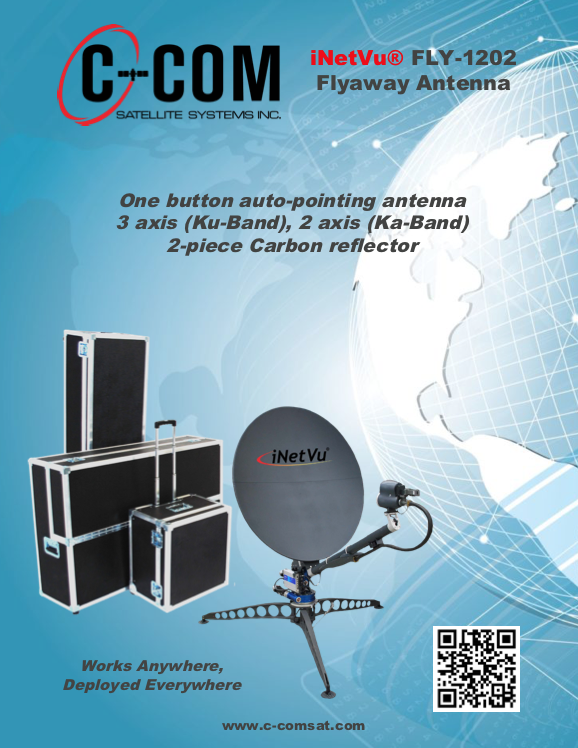Peter Mendham is an innovative engineer and business leader who has a broad background that covers all aspects of commercial development, R&D, design and development for software and hardware.
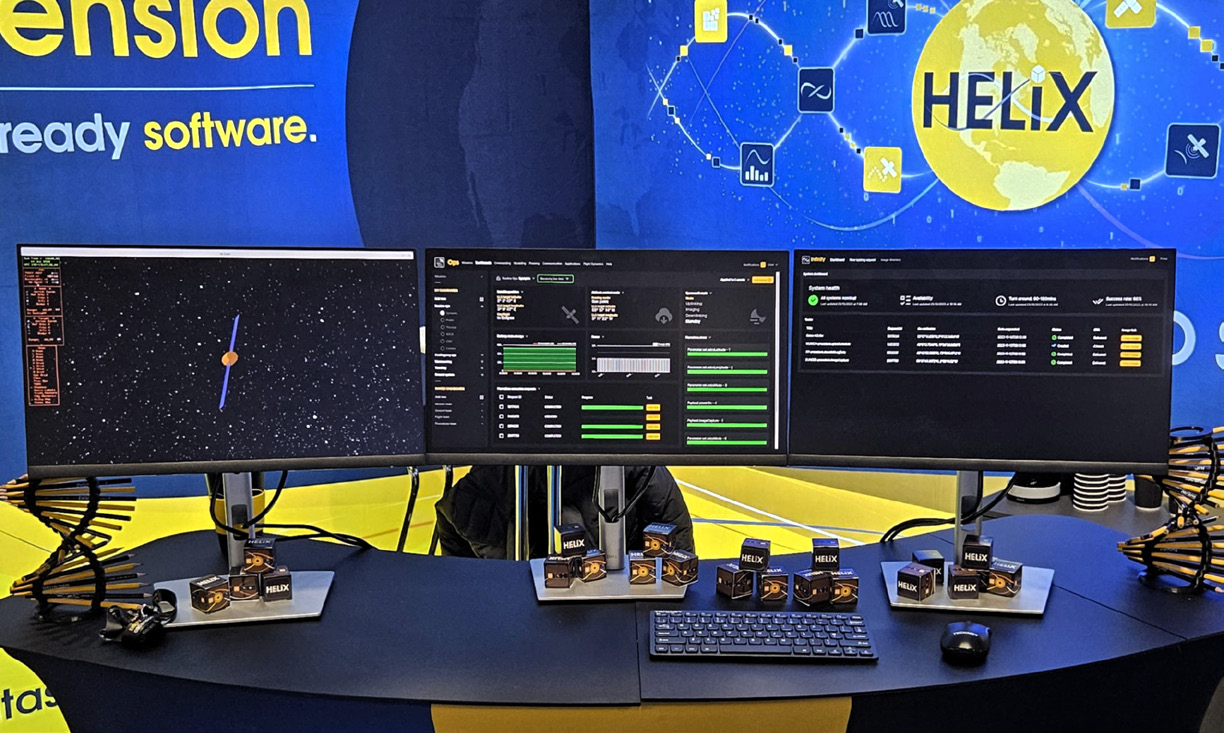
Mr. Mendham’s professional experience spans more than 20 years, including nearly 15 years in the space sector with a focus on onboard, mission control and simulation software as well as onboard data handling hardware and control systems.
Over his career, Mr. Mendham developed a solid understanding of the practicalities of engineering innovative and dependable systems in a commercial environment. He possesses a strong academic background that allows him to take a rigorous approach to all of his work, with analytical abilities that also allow him to take a fresh look at even the most complex problems, often inspiring new and innovative solutions. Mr. Mendham’s business development experience allows him to listen to customers, identify market needs and match the correct technology to the right opportunity.
Mr. Mendham’s specialties include project management; innovation; research; software architecture, software development in a variety of environments/languages; structured design, including UML; model-driven engineering; communications systems and protocols; hardware development for digital and analogue, including high-speed digital systems; FPGA development in VHDL and Verilog; product design; control theory and control system development; multi-agent and distributed systems; embedded systems.
Good day, Mr. Mendham. Would you please tell our readers about your background and how you became involved in the software side of the space industry?

Peter Mendham
Peter Mendham
I trained as an electronic engineer and quickly found that the big picture around the work I was doing was what I found motivating and, for me, there is nothing more motivating or inspiring than space. A student internship got me a foot in the door of the industry and set me up for a wide-ranging PhD spanning dynamic control, artificial intelligence and software architectures.
In my first industrial role, I was lucky to be working in a dynamic University spinout and the size of the team meant I got to engage with hardware and software as well as business development and commercial interactions. The hardware was fascinating, but I was very conscious how small a part of the big picture the technology was. I found software compelling because of its role in bringing the big picture together.
Please tell us what led you to establish Bright Ascension?
Peter Mendham
I had spent several years working in hardware and software for large ESA-class missions with a primary focus on R&D projects. It was a really interesting time: not only was I exposed to the current “state-of-the-art,” I was actively engaged in projects to try and push the boundaries of the possible.
Perhaps my biggest observation at the time was how large the gap between those things was and, given that the CubeSat form factor was just gaining traction, how much potential there would be for a new approach to space software which was a better match for the emerging commercial landscape of New Space.
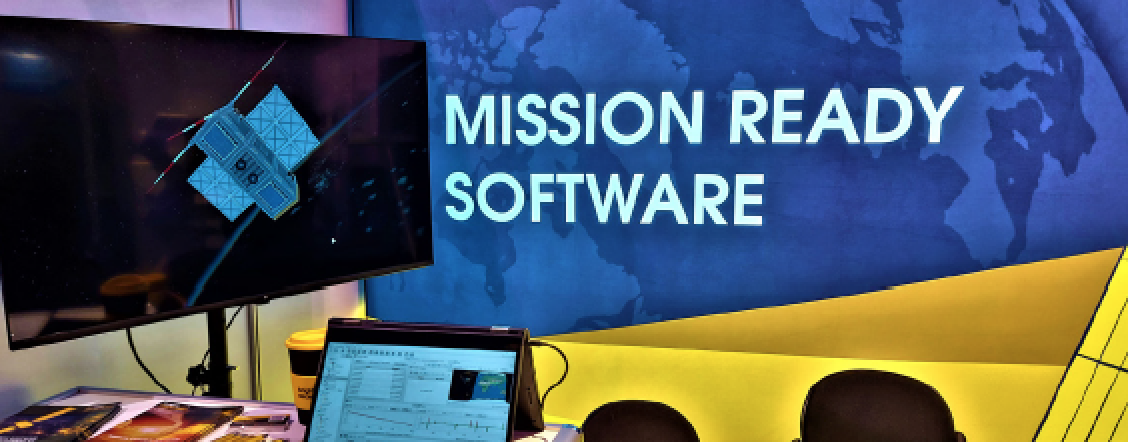
What do you think are the current challenges in the space software market and what is needed to resolve these?
Peter Mendham
The software challenges in the space industry are closely tied to the hardware trends we’ve seen shaping up over the last decade. These trends include things such as commodification, the diversification of hardware and software, the shift toward constellations, and the increasing accessibility to vast amounts of space-based data.
As the industry continues to grow and new hardware technologies and key services, such as ground station networks, become more accessible and diverse, it’s creating new opportunities. However, it also presents significant challenges for the software systems that underpin everything. Now, these systems must efficiently handle a wide array of spacecraft, each with different capabilities and hardware systems, often coming from various vendors.
This complexity grows exponentially as missions scale up and incorporate new subsystems, spacecraft, software technologies and services into fully operational and intricate space systems.
In essence, the core challenge is keeping up with ever-evolving requirements, making sure that all parts of the complex flight-ground software system work seamlessly. This challenge doesn’t just end during development; it extends as systems move on, become operational, and enter the commercial market.
Our approach to tackling these challenges is rooted in robust system architecture, integration and information sharing throughout the mission lifecycle. Whether it’s the initial stages of development, the manufacturing process, on-orbit operations, or the delivery of space-based insights and analytics to end-users, we focus on achieving cohesion and efficiency at every step.
What does your company’s new HELIX software suite offer as a solution to the industry?
Peter Mendham
The HELIX software suite is something we’re really excited about and it is set to launch in the coming months. What makes HELIX stand out is that it offers a comprehensive, end-to-end solution for space software, covering the entire mission lifecycle.
Here’s how it works: HELIX covers and tightly connects three critical sectors in the space industry. First, it’s deeply involved in the upstream sector, which means it helps with the development and operation of space systems. Second, it plays a crucial role in the midstream sector by improving the delivery and management of space-based services. Finally, it empowers the downstream sector to make the most of space services for delivering insights and applications. So, it’s essentially an all-encompassing solution that spans the entire spectrum of space operations.
Why do we think HELIX is a game-changer? It all comes down to our extensive experience in the field. Over the past decade, we’ve been part of more than 40 diverse missions.
What we’ve noticed is that software systems at different stages of the infrastructure often tend to be disconnected, disjointed and poorly integrated, which is a cause of major headaches. It leads to significant inefficiencies and, in some cases, even poses risks that could result in system failures.
HELIX is designed to bridge these gaps and boost efficiency. It simplifies processes and, importantly, makes missions more cost-effective. It’s essentially a solution that streamlines the entire mission, making it smoother and more efficient from start to finish.
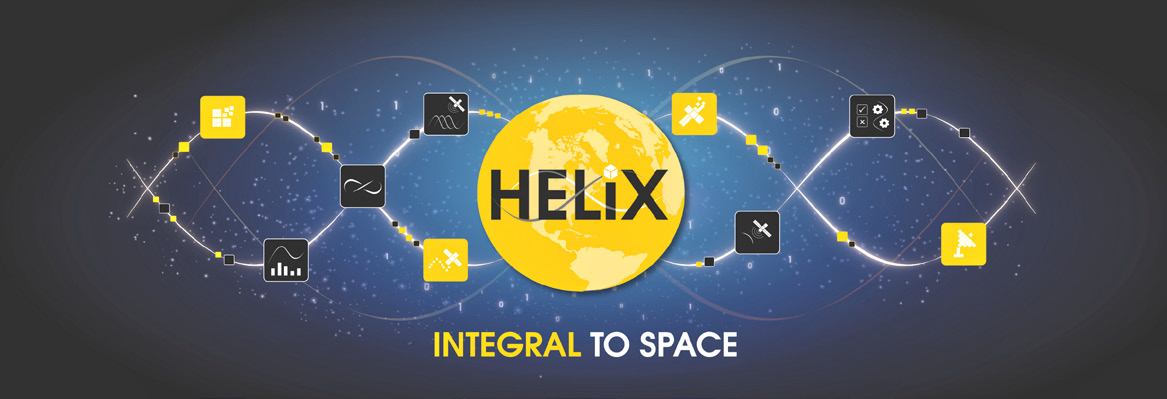
How does HELIX benefit upstream manufacturers and system integrators as well as downstream service providers?
Peter Mendham
HELIX is essentially the result of our extensive experience and understanding of the space industry, particularly in the upstream sector and spacecraft operations. Over the past decade, we’ve been part of a wide range of missions for a diverse set of applications, and that exposure has given us a unique perspective.
What we observed was that many of the challenges in the downstream sector and service delivery stemmed from inefficient integration, communication, and a lack of understanding of the space aspect of the system. It’s not enough to just make the ground side and flight side “talk” to each other. Technical and commercial drivers in the industry push towards a high level of heterogeneity. The real challenge lies in consistently providing services and maintaining this complex, often disjointed system over time as it naturally evolves and undergoes changes.
What makes HELIX truly unique is its ability to bridge the upstream and downstream sectors through what we call the midstream. This means that all components of the value chain, whether in space or on the ground, can communicate effectively and work well together without requiring extensive configuration. As mission requirements inevitably change, HELIX automatically adapts, minimizing the need for manual adjustments.
In the current landscape where there’s a growing demand for space-based data, insights, and analytics, HELIX is well-prepared to support emerging technologies like AI for space applications, software-defined systems, edge computing, virtual constellations, and more.
It includes a customizable multi-vertical software platform to provide high-level tasking and monitoring of space systems at the level of a service such as Earth Observation (EO), communications, science or technology demonstration. This platform fully integrates lightweight apps that can be developed through HELIX suite and are a powerful way of deploying software- defined elements into flight and ground space systems with seamless operational integration. This supports everything from software-defined payloads to onboard or in-cloud data processing.
What’s included in the HELIX product suite?
Peter Mendham
The HELIX suite is quite comprehensive, covering all aspects of space software development. It includes key areas such as flight software, testing and simulation, ground software development, operations, and even the delivery of data insights and analytics. The development solutions are highly modular and allow new mission-specific software to be built from the wide variety of flight- proven software components we maintain in our libraries.
One of the standout features of HELIX is its flexibility. It offers a range of feature-rich development environment products that can be used for designing user- or mission-specific software packages.
But we also recognize that in today’s fast-paced industry, there’s a growing demand for standardized solutions. That’s why we’ve introduced standardized “out-of-the-box” products within HELIX. These are designed to streamline the software development process, making it more efficient and accessible. It’s all about offering options that cater to a wide range of preferences and requirements in the space software domain.
What would be the reasons why HELIX should be selected as a solution as opposed to competing space software products?
Peter Mendham
Ultimately, HELIX stands out as a unique solution. There’s currently no competitive product out there that can quite match the range of benefits it offers.
As we discussed, its most standout feature is its multi-vertical and end-to-end approach. However, what it means in practice is that every specific software system, architecture, and infrastructure can be developed significantly faster, operated with simplicity, scaled effortlessly, and managed at a significantly lower cost over the long haul.
But there’s more to it. HELIX is vendor- and platform-independent. It allows for a variety of different vendors, whether at a low or high level and even within a single, extensive constellation.
This adaptability is crucial because as missions evolve, HELIX helps to accommodate changes, reducing the need for extensive redevelopment or refactoring. It’s designed with portability in mind, allowing individual modules to be swapped out and adjusted to new requirements as they arise.
In practical terms, it means that any new additions or modifications can be automatically recognized and integrated across the entire ground-space system with minimal configuration. This significantly simplifies the development, operation, and management of missions, making the entire process not only more efficient but also more cost-effective.
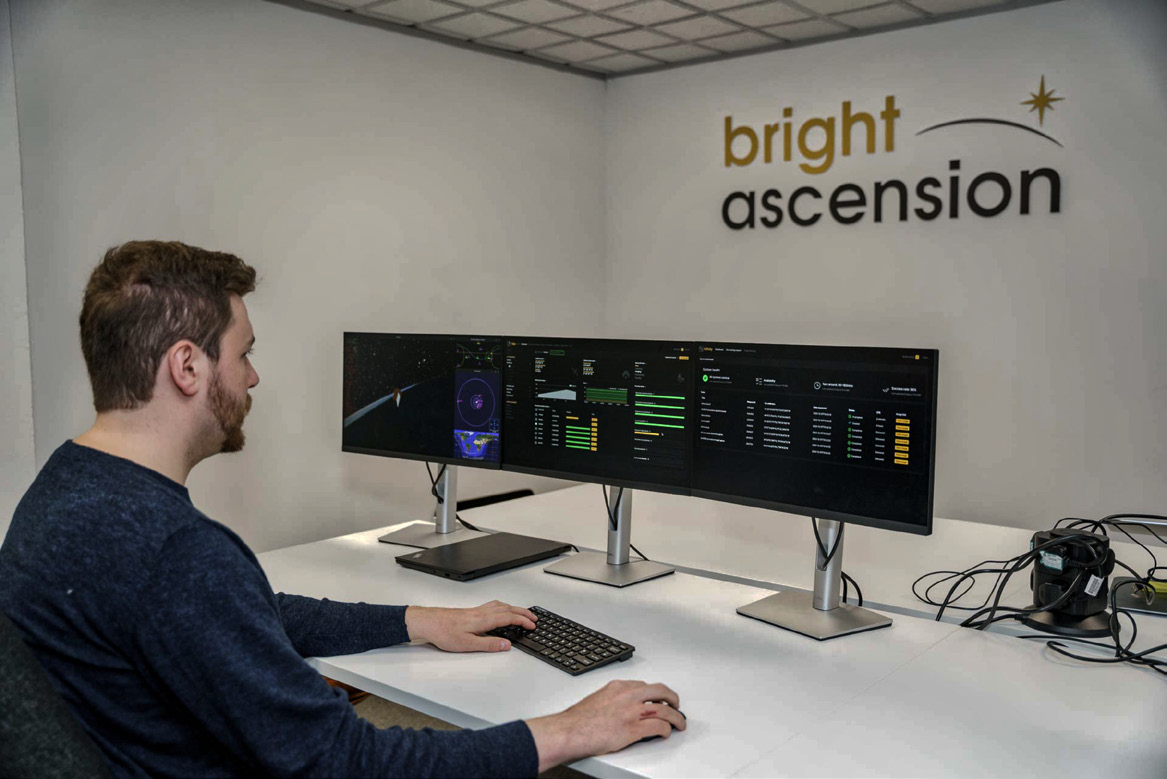
Many companies develop their own software packages, sometimes making use of free open-source software. Why should the Bright Ascension company be considered as the space software solutions provider?
Peter Mendham
First, and most importantly, choosing HELIX means gaining access to our dedicated support and engineering teams with hands-on experience in applying our products across a diverse range of missions. This access extends beyond answering basic “how-to” questions; we can offer valuable insights into best practices and expert design advice.
One of the key challenges in space software is the lack of clear guidelines, manuals, or precise rules for designing your system’s architecture. Building a good architecture takes years of experience, expertise, specialized skills, and resources that aren’t always readily available to satellite developers and service providers.
In addition to our software expertise, we provide a wide range of hardware support solutions, including a good selection of commonly used Commercial Off-The-Shelf (COTS) CubeSat hardware components.
Finally, one cannot overlook the integration possibilities with ground tools, which significantly reduce the need for manual work.
What advantages does operating a company in Scotland provide?
Peter Mendham
We are quite proud of our ties to Scotland which, in many ways, is at the forefront of the growing UK space industry and has a prominent global presence.
To put it into perspective, today there are more than 130 space companies operating in Scotland, some internationally renowned. What truly underscores the strength of Scotland’s space industry is the multitude of smaller enterprises, such as ours, that contribute significantly to the Scottish space ecosystem. These companies offer a wide spectrum of solutions, from cutting-edge software platforms to highly specialized technologies.
This collective effort creates a self-sufficient and tightly interconnected space supply chain within the country. It’s a place where you can conceive, build, equip, and soon even launch a satellite, all in Scotland.
We are proud to be part of this extraordinary pool of talent. Our software has already supported numerous Scottish-built satellites, enabling them to launch successfully and fulfill their missions.
What is the future of the space software industry? Where do you see Bright Ascension’s place in it?
Peter Mendham
While I don’t want to come across as overly confident, we genuinely believe we’re driving a revolution in the space software market. Here’s why: In our industry, you’ll find various technology providers offering specialized solutions in different sectors. For instance, some focus on mission operations management, others on space-based data provision. However there is no end-to-end comprehensive solution that connects these systems together.

Over the years, we’ve noticed a common trend in our industry. Engineering efforts often get narrowly focused on specific spacecraft or mission elements, sometimes overlooking the intricate nature of the entire space system. This oversight can extend to operations, service delivery, and even the lifecycle of each individual spacecraft. The consequence is often seen later in the process, resulting in significant architectural changes, redevelopment, and re-engineering.
HELIX establishes a future-proof software infrastructure that adapts to changing requirements and technology. Our vision is to continue leading innovation in the space software industry, facilitating the success of space missions worldwide.
As you review your career, what project or projects truly bring a sense of satisfaction to you?
Peter Mendham
I’ve been really lucky to have been involved in such a wide range of technologically innovative mission and projects, and to have worked with exciting people across the world. I can pull out very specific projects which were technically challenging, such as ESA’s QARMAN mission, or very successful, such as the UK’s Satellite Applications Catapult’s first IOD mission.
However, I think what gives me the most satisfaction is seeing how far we’ve come. I am fortunate to work with a great team of people and together we have brought some exciting technology a long way, even when the path has not been easy.
Every step of the way we have brought new benefits which we can take to partners and customers and use to make their lives better as well as to help push the industry forward, as a whole.
That’s what drives me the most, I think, the idea that we might be able to make a really positive difference to the industry and what it offers, overall, to the wider society.


